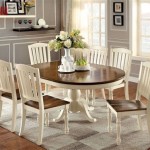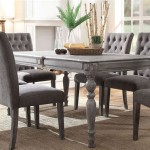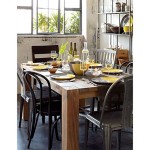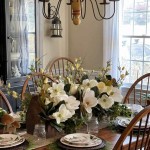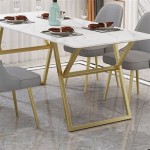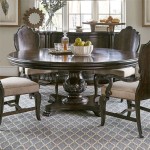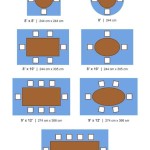Formal Dining Room Table Settings: An Essential Guide
Formal dining is an art form, steeped in tradition and etiquette. It requires meticulous attention to detail, with every element contributing to an elegant and unforgettable dining experience. One crucial aspect of formal dining is the table setting, which sets the tone and reflects the host's attentiveness and sophistication. A well-executed formal dining table setting is more than just placing silverware and glasses; it involves an intricate arrangement of elements that follow established protocol and create a visually pleasing and functional layout.
The Basic Elements of a Formal Table Setting
A formal table setting encompasses a specific arrangement of cutlery, glassware, and china. The placement of each item is dictated by tradition and practicality, ensuring that guests can easily navigate the course of the meal. The basic elements of a formal table setting include:
- Dinner Plate: The dinner plate forms the foundation of the setting. It should be placed approximately one inch from the edge of the table, centered directly in front of each guest. The plate should be large enough to accommodate the other serving pieces.
- Napkin: The napkin is placed to the left of the dinner plate, either folded or rolled. It should be easily accessible for guests to unfold and use throughout the meal.
- Silverware: The silverware is arranged in a specific order, reflecting the sequence of courses. The fork, positioned to the left of the plate, is used for the main course. The salad fork, if used, is placed to the left of the dinner fork. The knife, positioned to the right of the plate, is used for the entree. The soup spoon, if used, is placed to the right of the knife.
- Glassware: The glassware is placed to the right of the knife. The water goblet, typically the largest, is placed directly above the knife. The wine glass, if used, is positioned to the right of the water goblet. Additional glassware for other beverages, such as champagne or sherry, may be added as needed.
- Bread and Butter Plate: The bread and butter plate is placed above the forks, slightly to the left of the dinner plate.
- Place Card: A place card, if used, is placed above the dinner plate, centered. It indicates the guest's name and seat assignment.
Order of Placement and Use
The order of placement and use of silverware and glassware is crucial in formal dining. Guests generally use the outermost pieces first, working their way inward as the courses progress. For example, the salad fork is used before the dinner fork, and the wine glass is used before the water glass. This systematic approach ensures a smooth dining experience and allows guests to easily identify the appropriate utensil for each course.
It is important to note that the specific arrangement of silverware may vary slightly depending on the number of courses and the type of meal. For instance, a formal dinner with multiple courses might include additional pieces, such as a fish fork or oyster fork. The arrangement of silverware should always be consistent and symmetrical, creating a visually pleasing and functional layout.
Additional Considerations for Formal Table Settings
Beyond the basic elements, several other factors contribute to a successful formal table setting:
Tablecloth and Runner
A tablecloth serves as the foundation for the table setting, providing a clean and elegant backdrop. The tablecloth should be of high quality, stain-resistant, and appropriate for the occasion. A runner, placed lengthwise along the center of the table, can add a touch of color or texture. The tablecloth and runner should complement the overall theme and color scheme of the dining room.
Centerpiece
A centerpiece adds a focal point to the table and completes the overall aesthetic. The centerpiece should be proportional to the size of the table, visually appealing, and not obstruct guests' views or conversations. Popular centerpiece options include floral arrangements, candles, or sculptures.
Lighting
Proper lighting is essential for creating an inviting and elegant atmosphere. Soft, warm lighting enhances the ambience and creates a cozy and intimate dining experience. Avoid harsh, overhead lighting, which can be unflattering and disrupt the flow of conversation.
Formal dining table settings require meticulous attention to detail and adherence to established protocol. By understanding the basic elements, order of placement, and additional considerations, hosts can create an elegant and unforgettable dining experience for their guests. Whether it's a special occasion or a regular family dinner, a well-executed formal table setting reflects the host's commitment to creating an occasion that is both sophisticated and enjoyable.

10 Formal Dining Room Ideas From Top Designers

Dining Room Table Decor Ideas How To Decorate Your

25 Formal Dining Room Decor Ideas Pictures Rugs Direct

Before After Formal Dining Room Ideas Decorilla Interior Design

How To Set A Beautiful Formal Table It S Easy Mantel And

D3602 Elegant Formal Dining Room Set Mcferran On

10 Formal Dining Room Ideas From Top Designers

11 Ideas For Setting The Perfect Table Extra Space Storage

How To Set A Beautiful Formal Table It S Easy Mantel And

25 Formal Dining Room Ideas Design Photos

